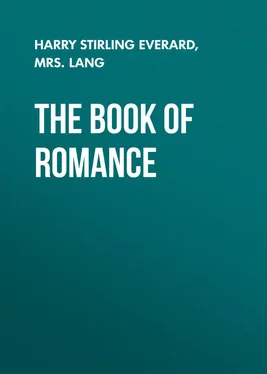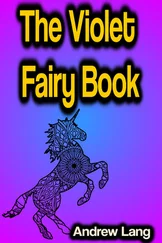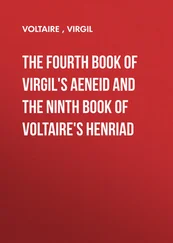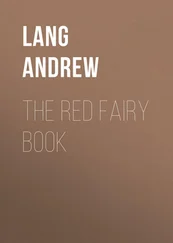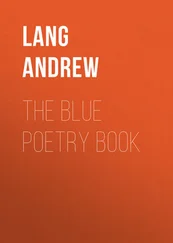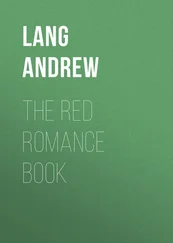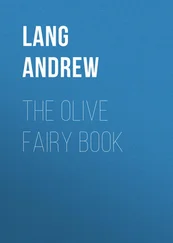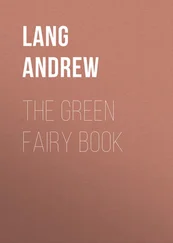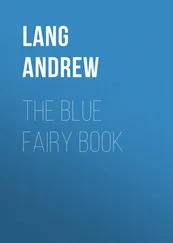Array Lang - The Book of Romance
Здесь есть возможность читать онлайн «Array Lang - The Book of Romance» — ознакомительный отрывок электронной книги совершенно бесплатно, а после прочтения отрывка купить полную версию. В некоторых случаях можно слушать аудио, скачать через торрент в формате fb2 и присутствует краткое содержание. Жанр: foreign_antique, foreign_prose, на английском языке. Описание произведения, (предисловие) а так же отзывы посетителей доступны на портале библиотеки ЛибКат.
- Название:The Book of Romance
- Автор:
- Жанр:
- Год:неизвестен
- ISBN:нет данных
- Рейтинг книги:3 / 5. Голосов: 1
-
Избранное:Добавить в избранное
- Отзывы:
-
Ваша оценка:
- 60
- 1
- 2
- 3
- 4
- 5
The Book of Romance: краткое содержание, описание и аннотация
Предлагаем к чтению аннотацию, описание, краткое содержание или предисловие (зависит от того, что написал сам автор книги «The Book of Romance»). Если вы не нашли необходимую информацию о книге — напишите в комментариях, мы постараемся отыскать её.
The Book of Romance — читать онлайн ознакомительный отрывок
Ниже представлен текст книги, разбитый по страницам. Система сохранения места последней прочитанной страницы, позволяет с удобством читать онлайн бесплатно книгу «The Book of Romance», без необходимости каждый раз заново искать на чём Вы остановились. Поставьте закладку, и сможете в любой момент перейти на страницу, на которой закончили чтение.
Интервал:
Закладка:
The Book of Romance
PREFACE
It is to be supposed that children do not read Prefaces; these are Bluebeard's rooms, which they are not curious to unlock. A few words may therefore be said about the Romances contained in this book. In the editor's opinion, romances are only fairy tales grown up. The whole mass of the plot and incident of romance was invented by nobody knows who, nobody knows when, nobody knows where. Almost every people has the Cinderella story, with all sorts of variations: a boy hero in place of a girl heroine, a beast in place of a fairy godmother, and so on. The Zuñis, an agricultural tribe of New Mexico, have a version in which the moral turns out to be against poor Cinderella, who comes to an ill end. The Red Indians have the tale of Orpheus and Eurydice, told in a very touching shape, but without the music. On the other hand, the negroes in the States have the Orpheus tale, adapted to plantation life, in a form which is certainly borrowed from Europeans. This version was sent to me some years ago, by Mr. Barnet Phillips, Brooklyn, New York, and I give it here for its curiosity. If the proper names, Jim Orpus and Dicey, had not been given, we might not feel absolutely certain that the story was borrowed. It is a good example of adaptation from the heroic age of Greece to the servile age of Africans.
Dicey and Orpus
Dat war eber so long ago, 'cause me granmammy tell me so. It h'aint no white-folks yarn – no Sah. Gall she war call Dicey, an' she war borned on de plantation. Whar Jim Orpus kum from, granmammy she disremember. He war a boss-fiddler, he war, an' jus' that powerful, dat when de mules in de cotton field listen to um, dey no budge in de furrer. Orpus he neber want no mess of fish, ketched wid a angle. He just take him fiddle an' fool along de branch, an' play a tune, an' up dey comes, an' he cotch 'em in he hans. He war mighty sot on Dicey, an' dey war married all proper an' reg'lar. Hit war so long ago, dat de railroad war a bran-new spick an' span ting in dose days. Dicey once she lounge 'round de track, 'cause she tink she hear Orpus a fiddlin' in de fur-fur-away. Onyways de hengine smash her. Den Jim Orpus he took on turrible, an' when she war buried, he sot him down on de grave, an' he fiddle an' he fiddle till most yo' heart was bruk.
An' he play so long dat de groun' crummle (crumble) an' sink, an' nex' day, when de peoples look for Jim Orpus, dey no find um; oney big-hole in de lot, an' nobody never see Jim Orpus no mo'. An' dey do say, dat ef yo' go inter a darky's burial-groun', providin' no white man been planted thar, an' yo' clap yo' ear to de groun', yo' can hear Jim's fiddle way down deep belo', a folloin' Dicey fru' de lan' of de Golden Slippah. 1 1 Mr. Phillips, writing in 1896, says that the tale was told him by a plantation hand, thirty years ago, 'long before the Uncle Remus period.'
The original touch, the sound of Orpus's fiddle heard only in the graveyards of the negroes (like the fairy music under the fairy hill at Ballachulish), is very remarkable. Now the Red Indian story has no harper, and no visit by the hero to the land of the dead. His grief brings his wife back to him, and he loses her again by breaking a taboo, as Orpheus did by looking back, a thing always forbidden. Thus we do not know whether or not the Red Indian version is borrowed from the European myth, probably enough it is not. But in no case – not even when the same plot and incidents occur among Egyptians and the Central Australian tribes, or among the frosty Samoyeds and Eskimo, the Samoans, the Andamanese, the Zulus, and the Japanese, as well as among Celts and ancient Greeks – can we be absolutely certain that the story has not been diffused and borrowed, in the backward of time. Thus the date and place of origin of these eternal stories, the groundwork of ballads and popular tales, can never be ascertained. The oldest known version may be found in the literature of Egypt or Chaldæa, but it is an obvious fallacy to argue that the place of origin must be the place where the tale was first written down in hieroglyph or cuneiform characters.
There the stories are: they are as common among the remotest savages as among the peasants of Hungary, France, or Assynt. They bear all the birth-marks of an early society, with the usual customs and superstitions of man in such a stage of existence. Their oldest and least corrupted forms exist among savages, and people who do not read and write. But when reading and writing and a class of professional minstrels and tellers of tales arose, these men invented no new plots, but borrowed the plots and incidents of the world-old popular stories. They adapted these to their own condition of society, just as the plantation negroes adapted Orpheus and Eurydice. They elevated the nameless heroes and heroines into Kings, Queens, and Knights, Odysseus, Arthur, Charlemagne, Diarmid, and the rest. They took an ancient popular tale, known all over the earth, and attributed the adventures of the characters to historical persons, like Charlemagne and his family, or to Saints, for the legends of early Celtic Saints are full of fairy-tale materials. Characters half historic, half fabulous, like Arthur, were endowed with fairy gifts, and inherited the feats of nameless imaginary heroes.
The results of this uncritical literary handling of elements really popular were the national romances of Arthur, of Charlemagne, of Sigurd, or of Etzel. The pagan legends were Christianised, like that of Beowulf; they were expanded into measureless length, whole cycles were invented about the heroic families; poets altered the materials each in his own way and to serve his own purpose, and often to glorify his own country. If the Saracens told their story of Roland at Roncevalles, it would be very different from that of the old Frankish chansons de geste . Thus the romances are a mixture of popular tales, of literary invention, and of history as transmitted in legend. To the charm of fairy tale they add the fascination of the age of chivalry, yet I am not sure but that children will prefer the fairy tale pure and simple, nor am I sure that their taste would be wrong, if they did.
In the versions here offered, the story of Arthur is taken mainly from Malory's compilation, from sources chiefly French, but the opening of the Graal story is adapted from Mr. Sebastian Evans's 'High History of the Holy Graal,' a masterpiece of the translator's art. For permission to adapt this chapter I have to thank the kindness of Mr. Evans.
The story of Roland is from the French Epic, probably of the eleventh century, but resting on earlier materials, legend and ballad. William Short Nose is also from the chanson de geste of that hero.
The story of Diarmid, ancient Irish and also current among the Dalriadic invaders of Argyle, is taken from the translations in the Transactions of the Ossianic Society.
The story of Robin Hood is from the old English ballads of the courteous outlaw, whose feast, in Scotland, fell in the early days of May. His alleged date varies between the ages of Richard I. and Edward II., but all the labours of the learned have thrown no light on this popular hero.
A child can see how English Robin is, how human, and possible and good-humoured are his character and feats, while Arthur is half Celtic, half French and chivalrous, and while the deeds of the French Roland, and of the Celtic Diarmid, are exaggerated beyond the possible. There is nothing of the fairylike in Robin, and he has no thirst for the Ideal. Had we given the adventures of Sir William Wallace, from Blind Harry, it would have appeared that the Lowland Scots could exaggerate like other people.
The story of Wayland the Smith is very ancient. An ivory in the British Museum, apparently of the eighth century, represents Wayland making the cups out of the skulls. As told here the legend is adapted from the amplified version by Oehlenschläger. Scott's use of the story in 'Kenilworth' will be remembered.
Читать дальшеИнтервал:
Закладка:
Похожие книги на «The Book of Romance»
Представляем Вашему вниманию похожие книги на «The Book of Romance» списком для выбора. Мы отобрали схожую по названию и смыслу литературу в надежде предоставить читателям больше вариантов отыскать новые, интересные, ещё непрочитанные произведения.
Обсуждение, отзывы о книге «The Book of Romance» и просто собственные мнения читателей. Оставьте ваши комментарии, напишите, что Вы думаете о произведении, его смысле или главных героях. Укажите что конкретно понравилось, а что нет, и почему Вы так считаете.
